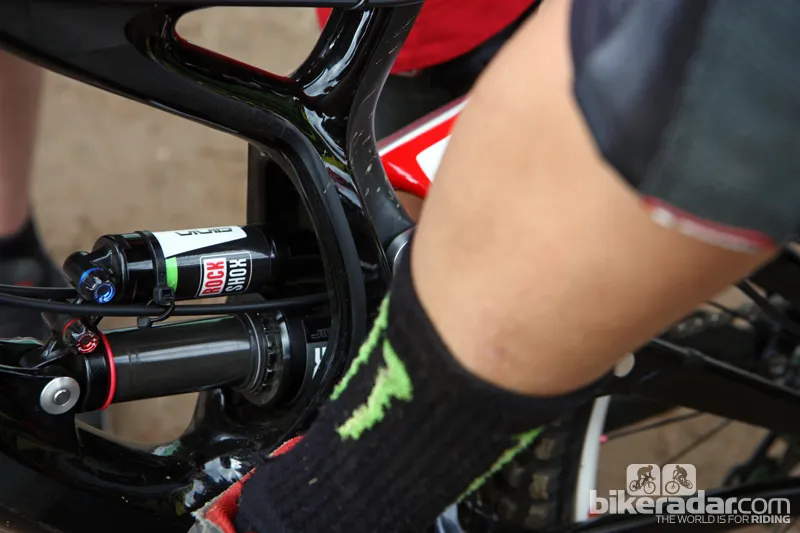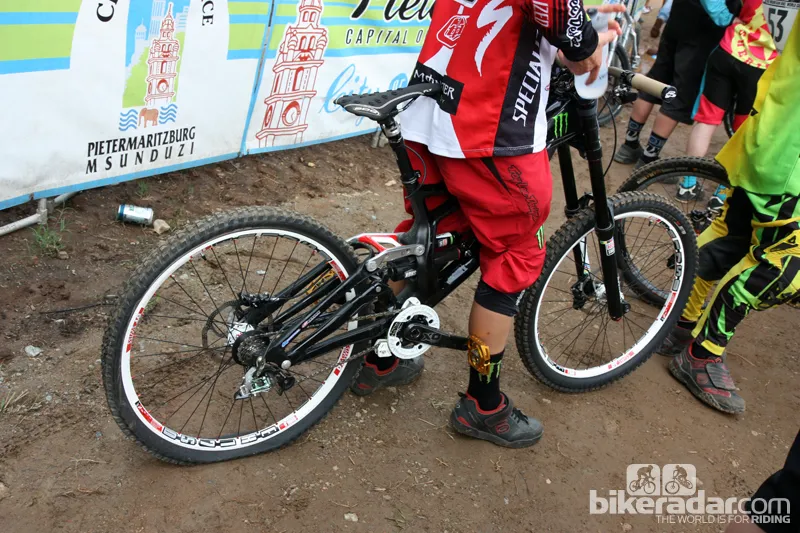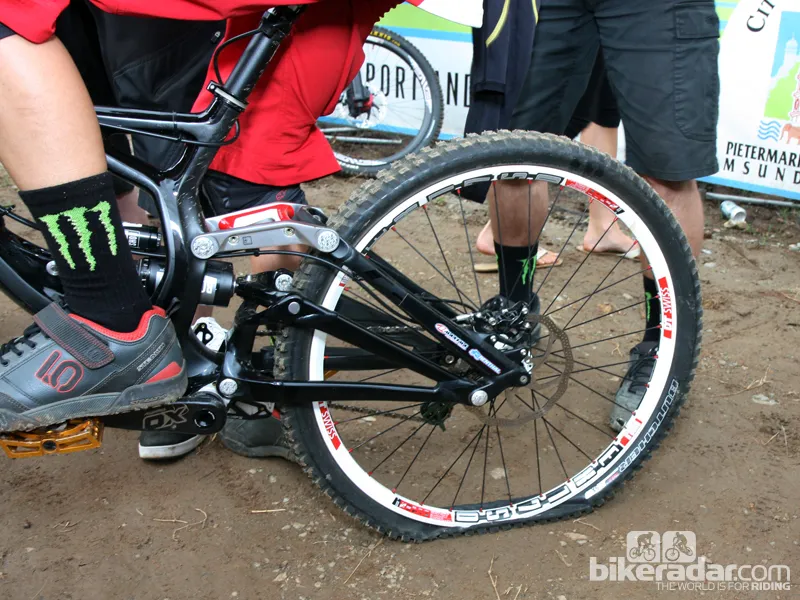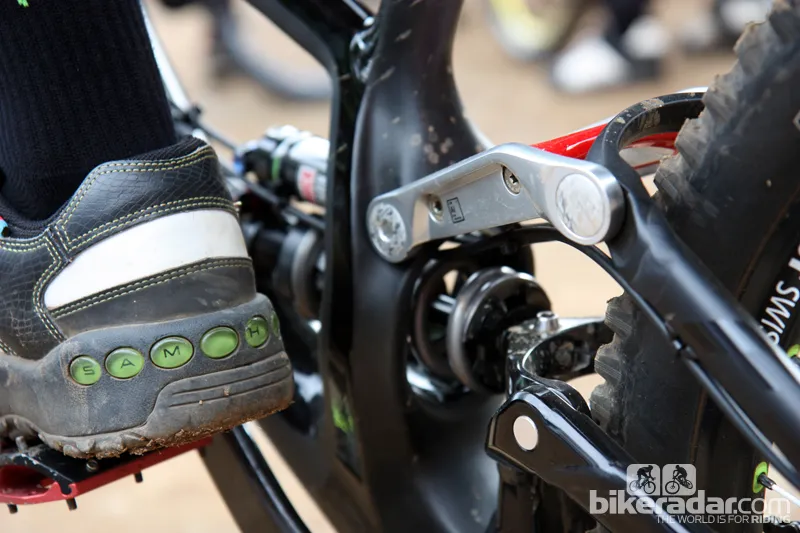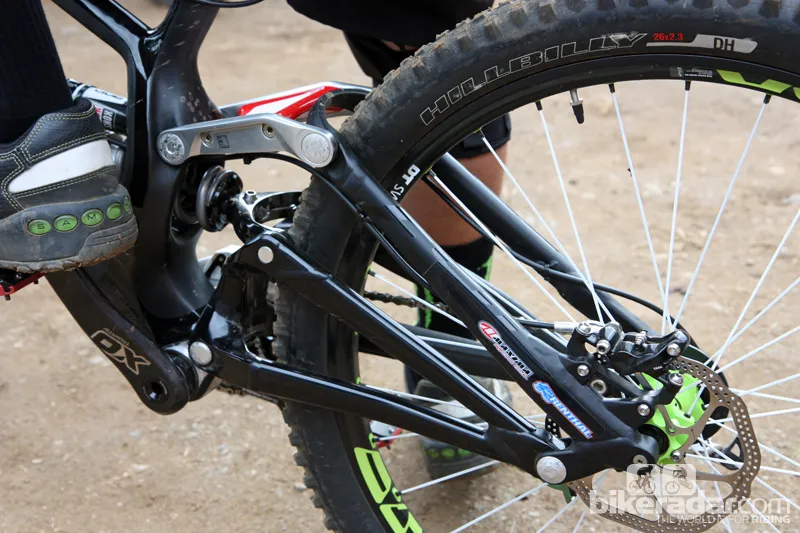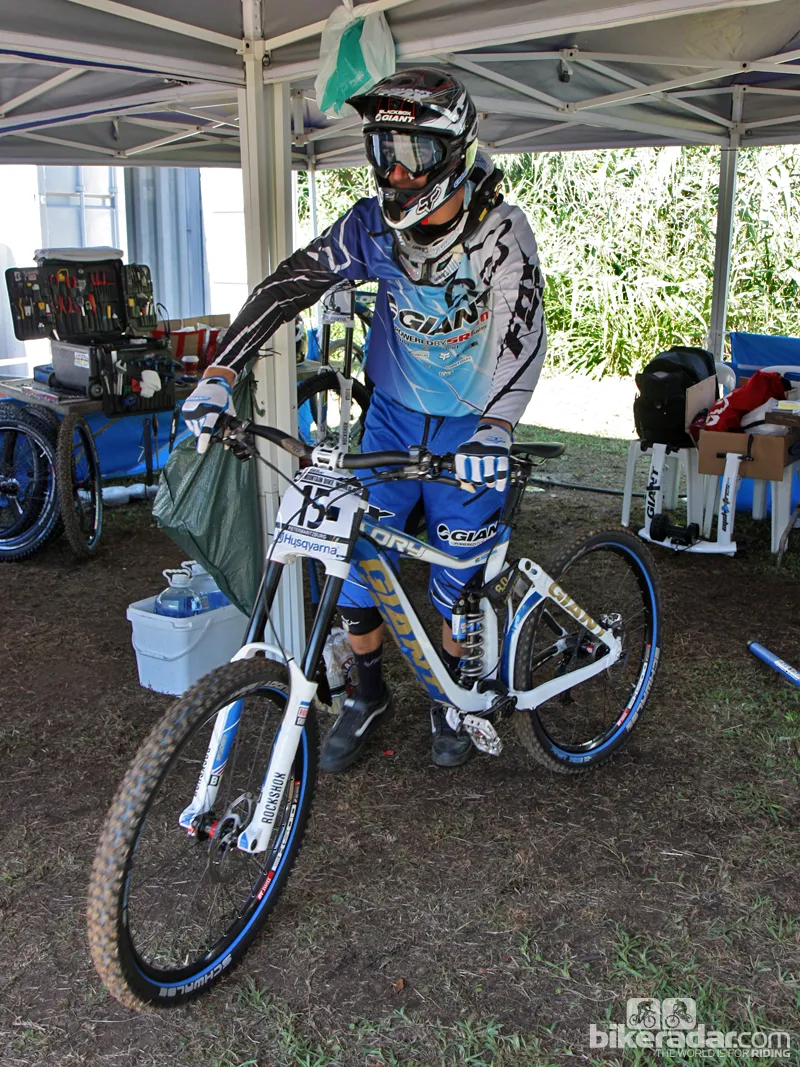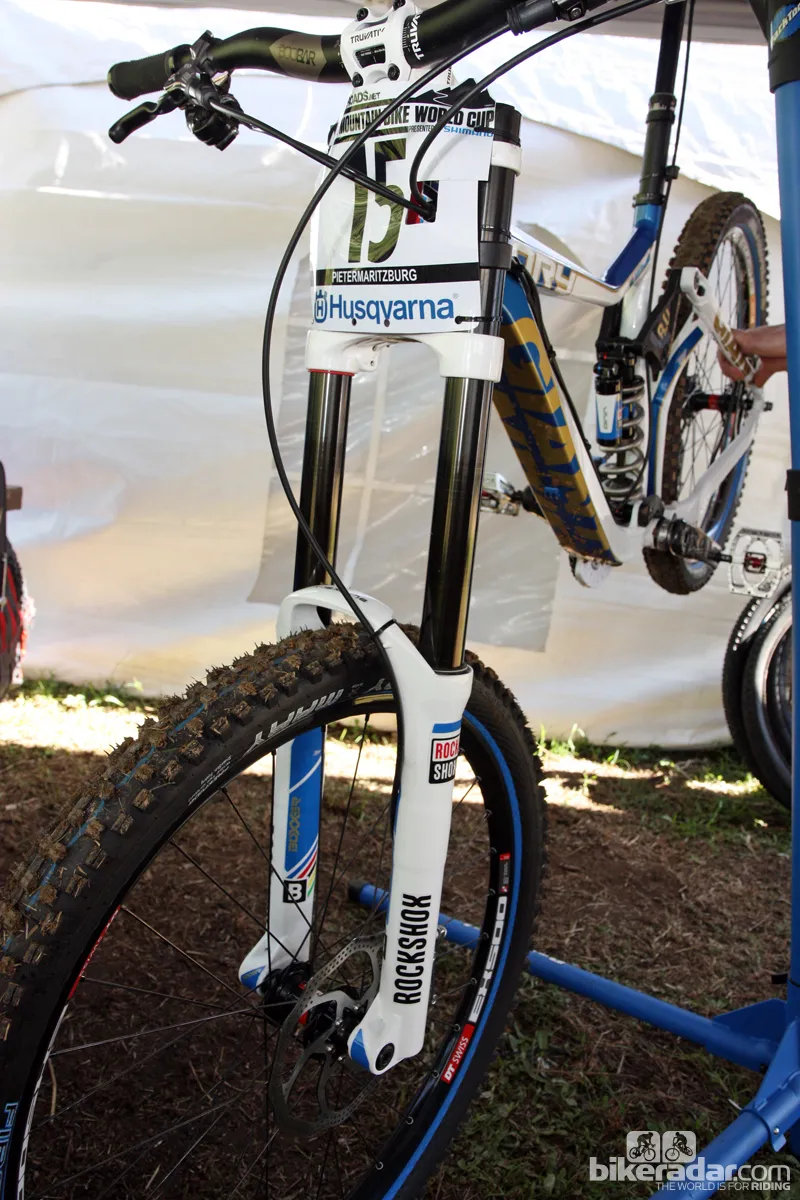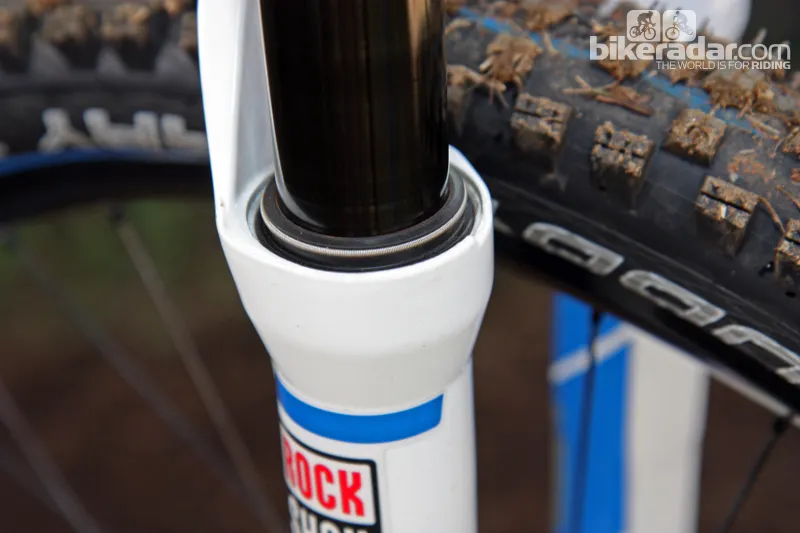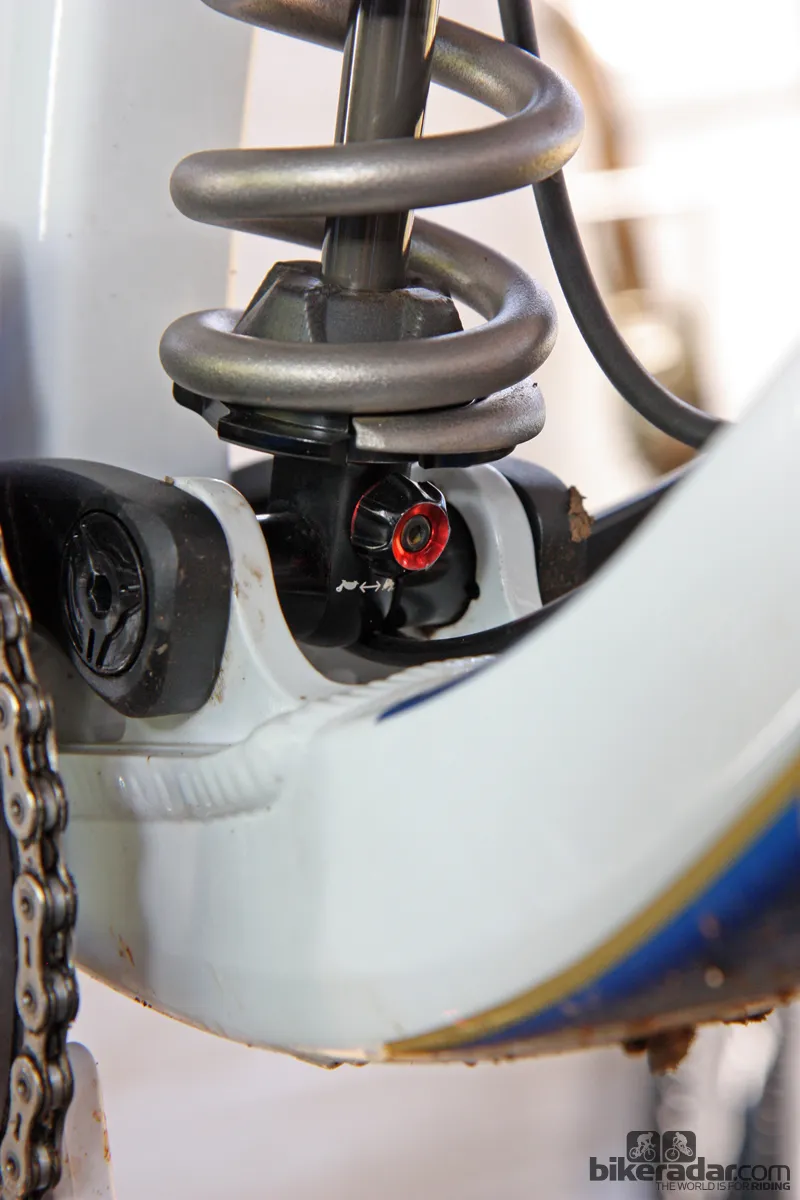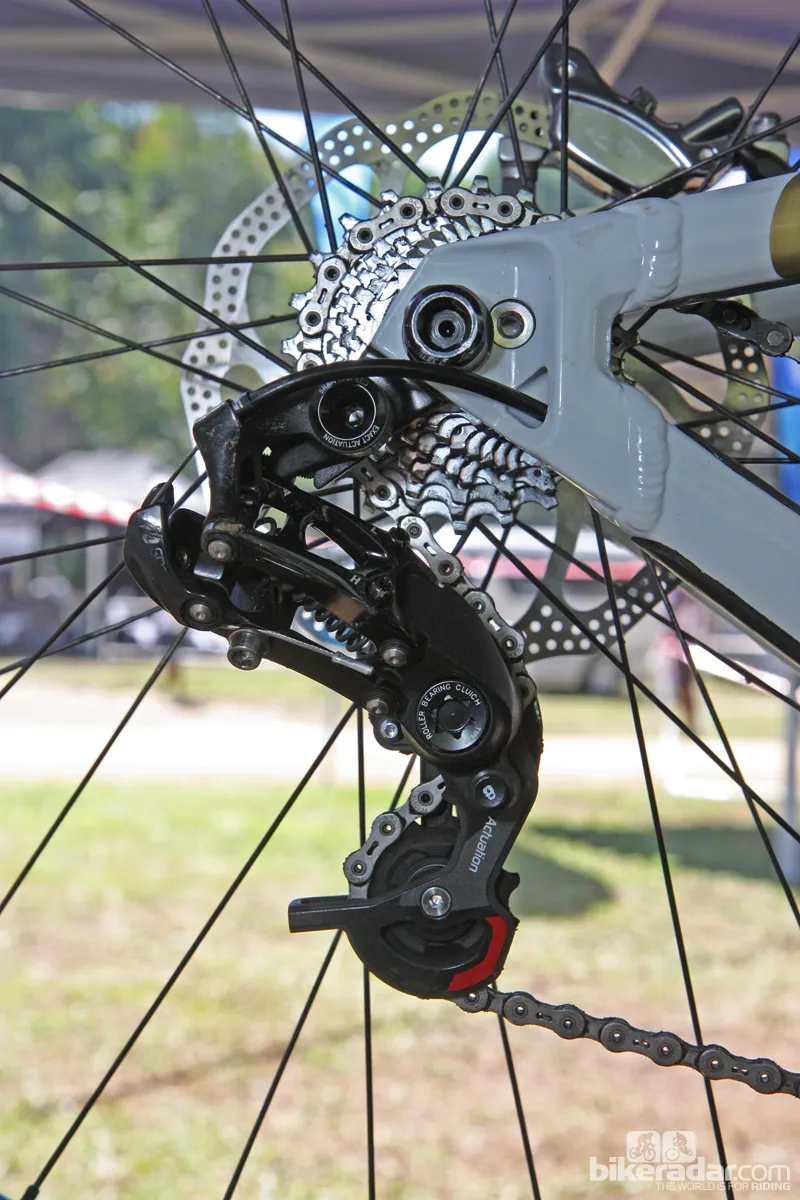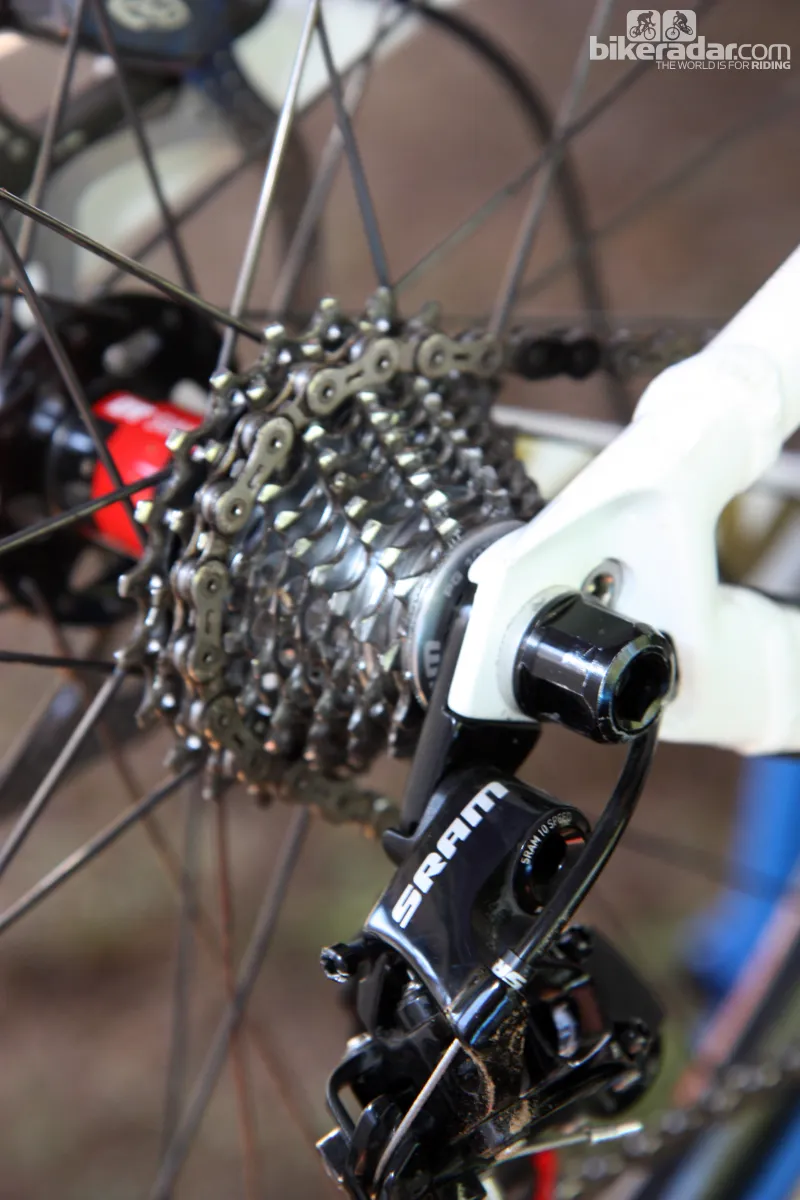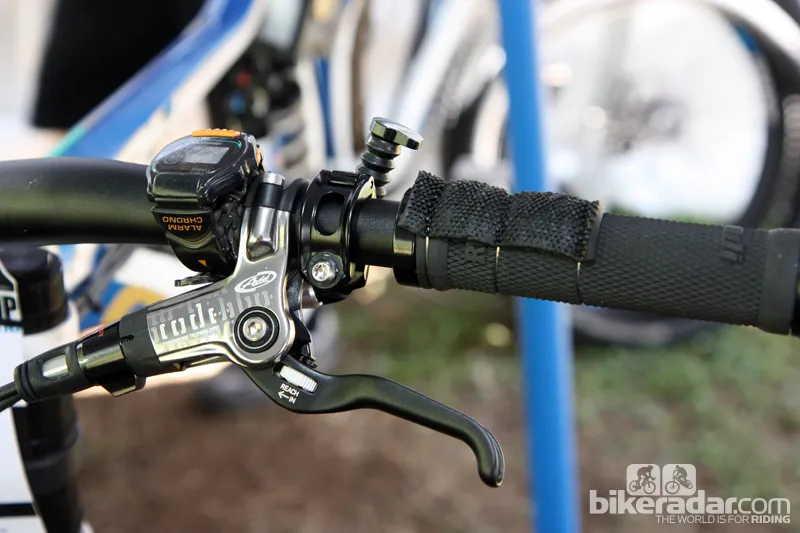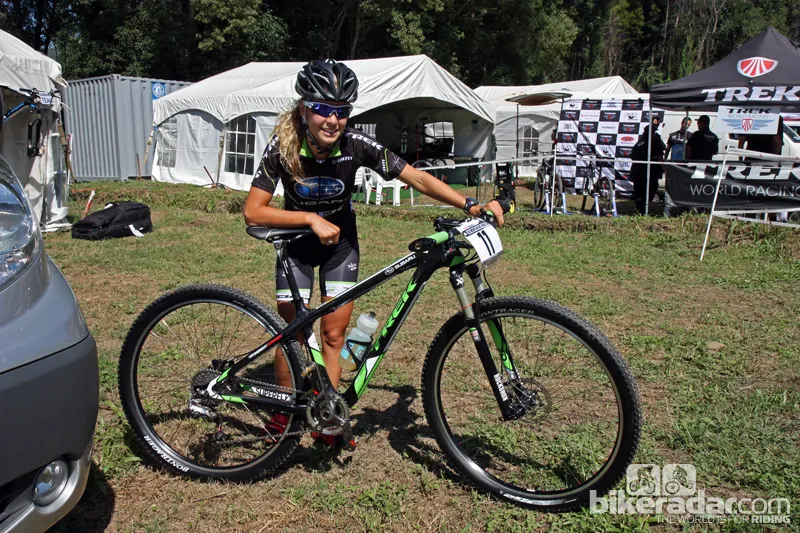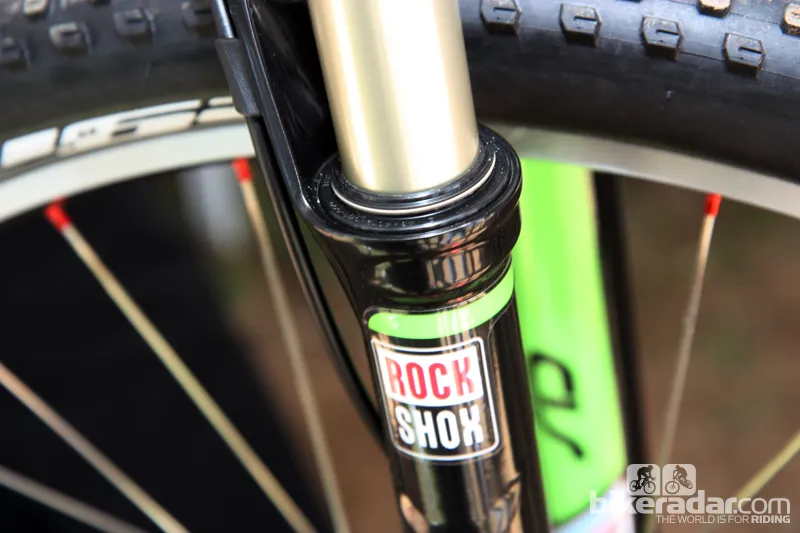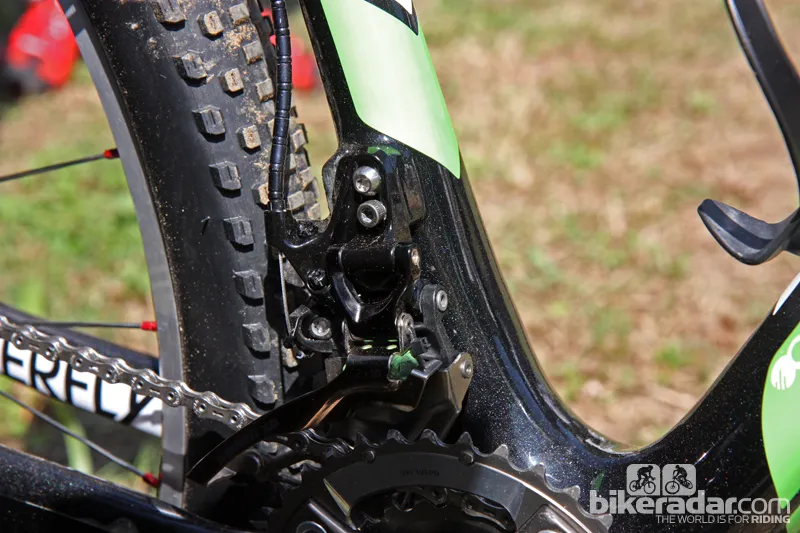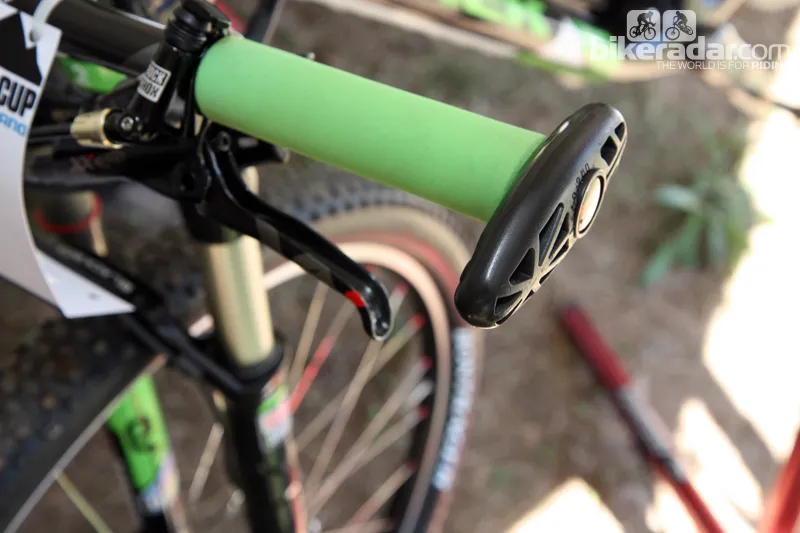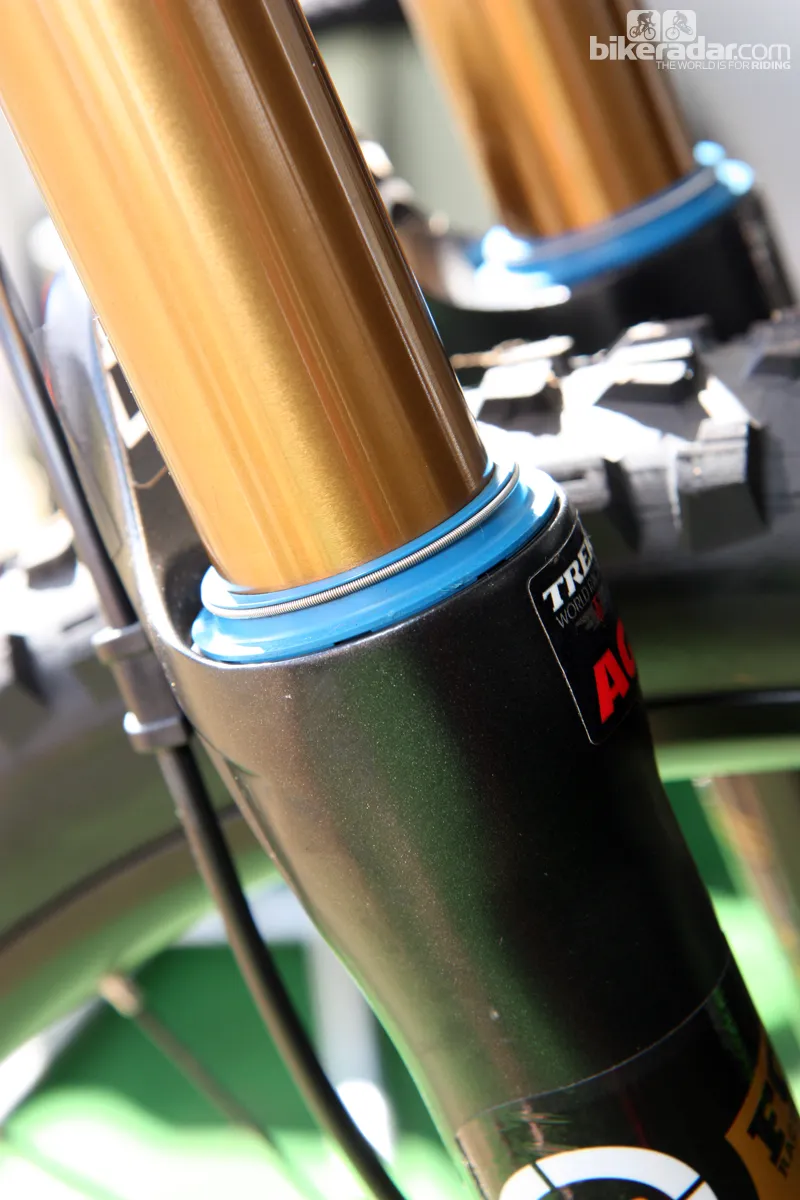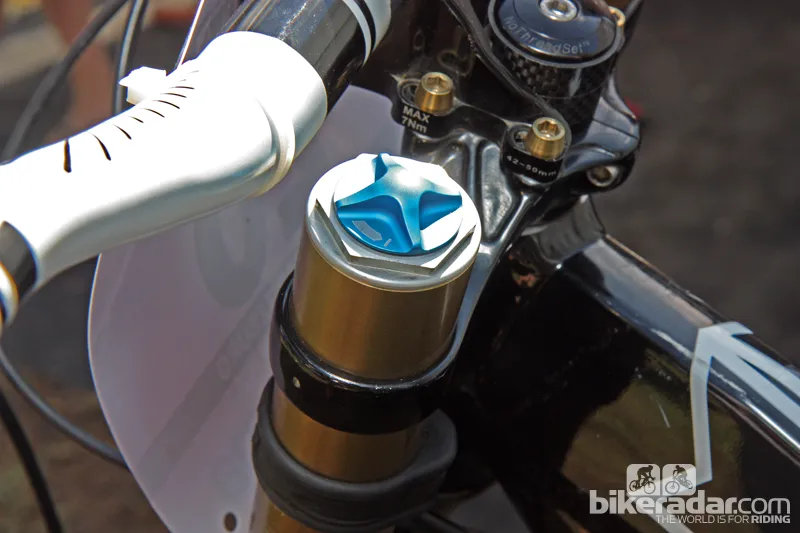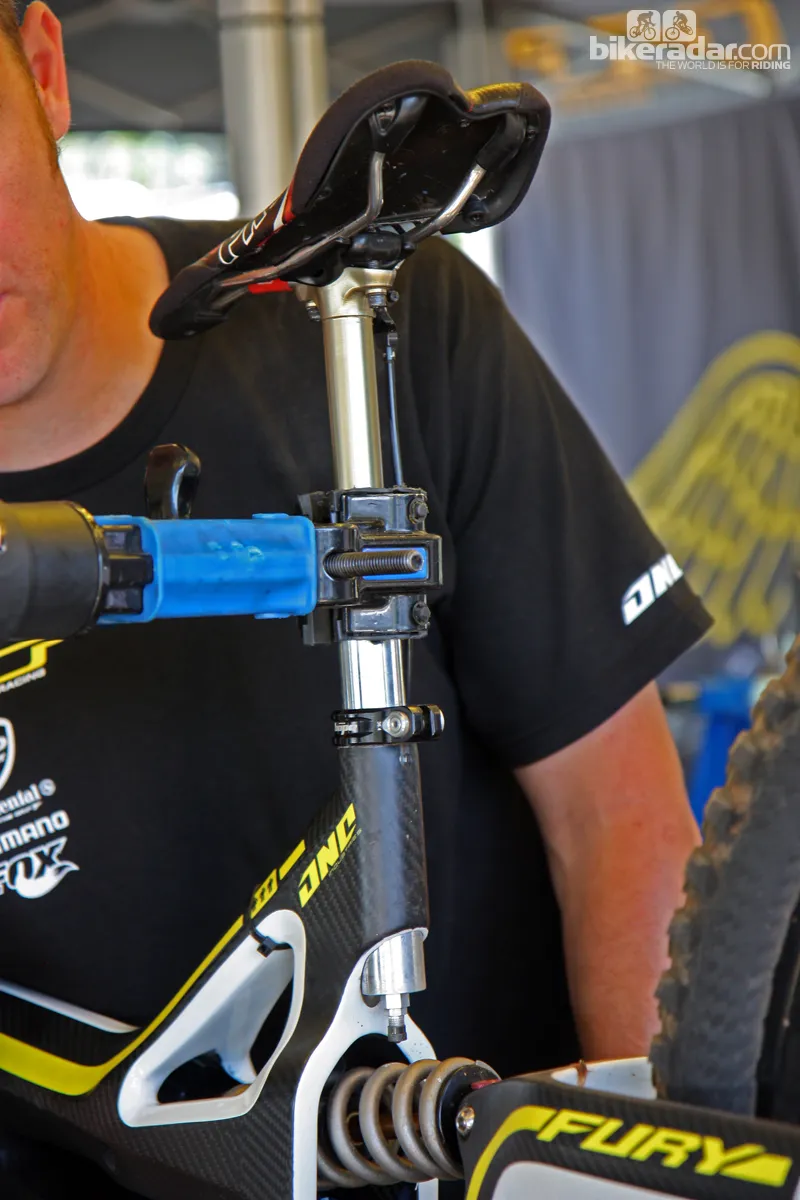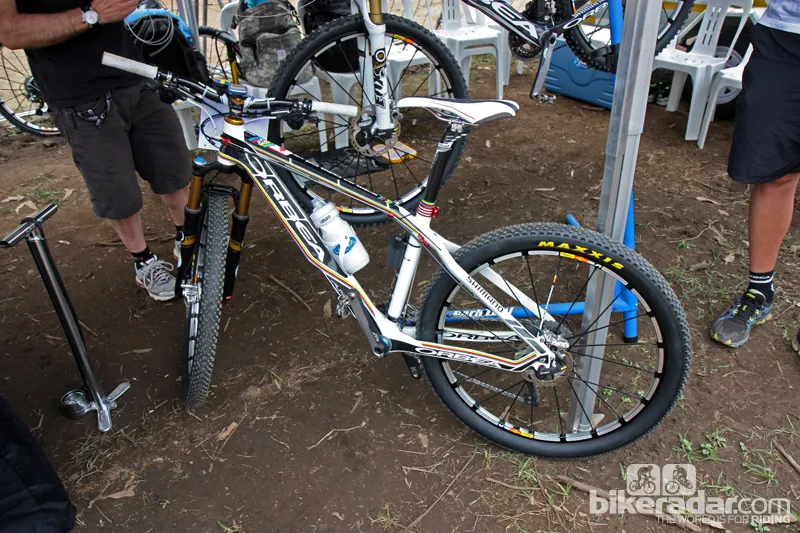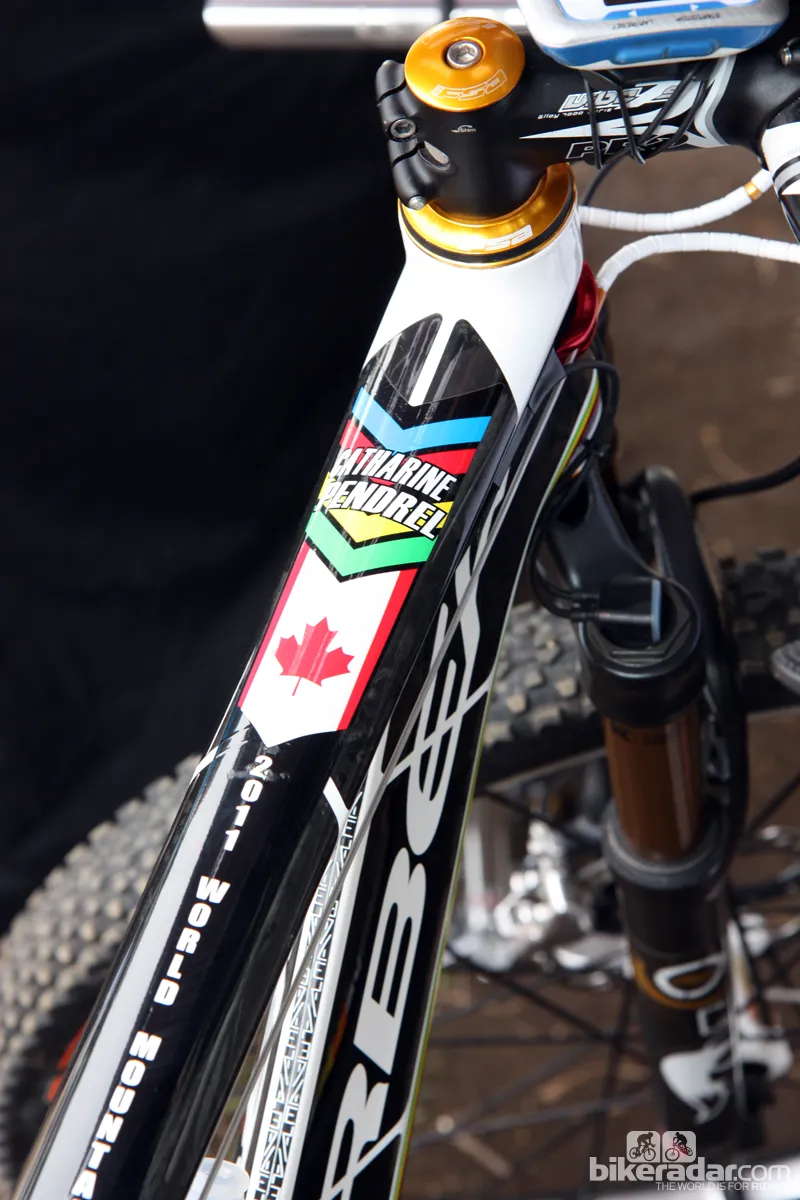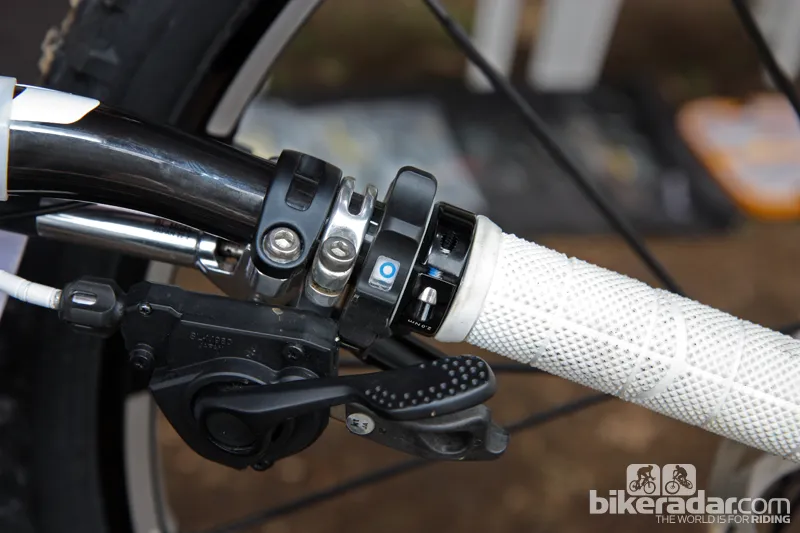The closer we look at the bikes used at the opening round of the 2012 UCI Mountain Bike World Cup series in Pietermaritzburg, South Africa, the more we find. Suspension giants RockShox and Fox Racing Shox equipped a number of key riders with new developments in fork and rear shock technology, both on the downhill and cross-country sides ends of the spectrum. Lighter? Smoother? More adjustable? More like all three.
New rear shocks, stanchion coatings and seals from RockShox
RockShox outfitted a number of downhill riders with new versions of their Vivid coil and Vivid Air rear shocks. In addition to expected revisions to the internals – sorry, we don't have details on that – are new tool-free beginning- and end-stroke rebound damper adjustments on both models.
PinkBike reported a possible external air volume adjustment on both shocks' piggyback reservoirs for tweaking bottom-out characteristics but we only saw it on Monster Energy-Specialized rider Troy Brosnan's Vivid Air shock in Pietermaritzburg, not the Vivid coil shocks on teammate Sam Hill's or Giant factory rider Andrew Neethling's bikes.
That doesn't mean such a thing doesn't exist – and we weren't able to locate all the new shocks scattered among the field – but it's likely RockShox have multiple variants undergoing rider testing as part of the company's BlackBox program.

The latest BlackBox-edition RockShox Vivid Air rear shock features some new adjustments relative to the current model, including a dial on the end of the piggyback reservoir
BlackBox-edition Boxxer forks were also treated to DLC-coated stanchions for smoother operation. RockShox have been playing with this surface treatment for some time now – Danny Hart won last year's world championship on DLC-coated tubes – and after this much development time, we can't help but wonder when it'll make its way into production.
We were also expecting to see some DLC-coated tubes on RockShox SID forks but alas, we didn't see any (though again, that doesn't mean they don't exist). We did note some new wiper seals on Emily Batty's (Subaru-Trek) SID XX World Cup, though.
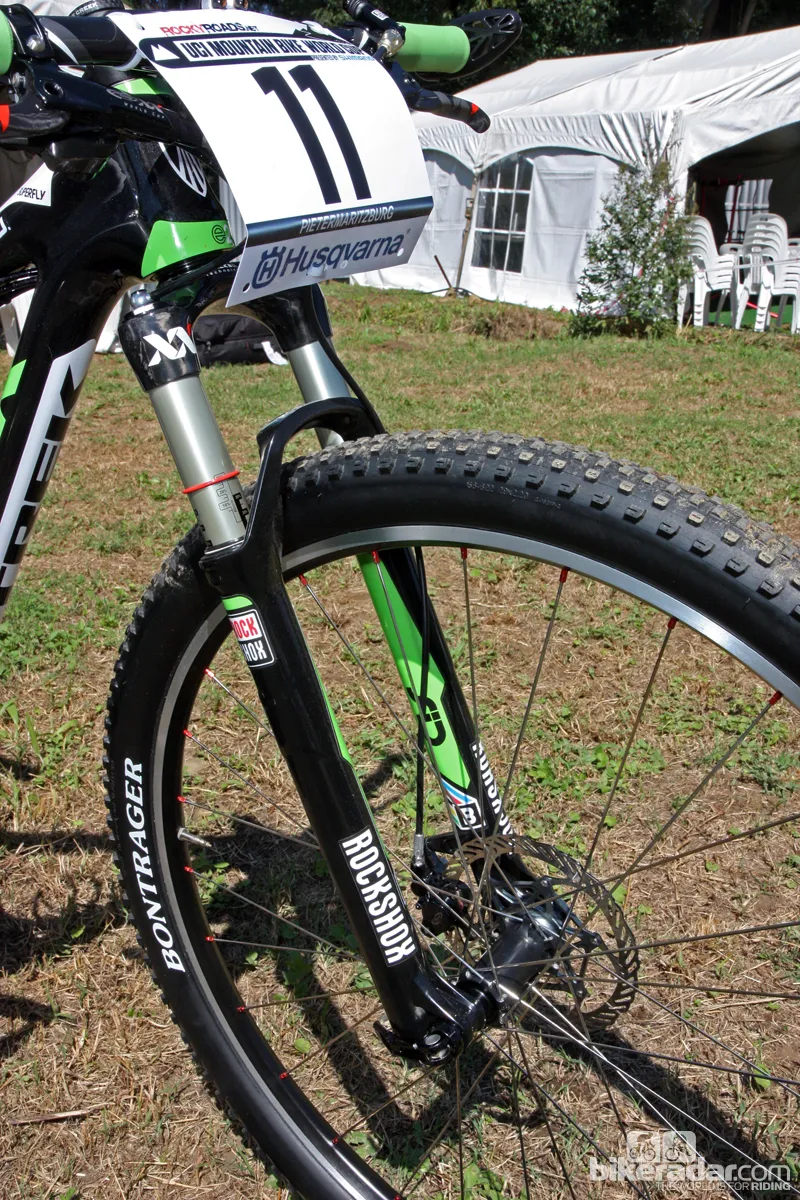
Emily Batty's (Subaru-Trek) BlackBox-edition RockShox SID XX World Cup fork doesn't look all that special aside from the new MY2013 logo but at the very least, there are some non-consumer seals installed
Fox go with air springs for pro-edition 40 downhill forks
At least half a dozen downhill riders in Pietermaritzburg tackled the pedaling-intensive course on air-sprung Fox 40 forks, including Aaron Gwin (Trek World Racing), Cedric Gracia (CG Racing Brigade) and much of the Yeti factory team. Air-sprung forks were identifiable by their non-etched top caps, which in this case were simply valve covers like on Fox's Float and TALAS forks instead of preload dials with their usual ' ' and '-' indicators.
Neither team mechanics, riders nor Fox officials on site in Pietermaritzburg would reveal any technical information, though Fox race program manager Mark Fitzsimmons did stress that it wouldn't be a MY2013 product – so don't bother calling Fox or your local dealer to place an order.

Trek World Racing star Aaron Gwin was among a number of downhillers at Pietermaritzburg running prototype air-sprung Fox 40 forks
That being said, we can guess at the internal setup based on what we know about Fox's other air sprung forks. We're proposing the Fox 40 Float (as we're calling it) will likely use a dedicated stanchion with a polished inner wall like on the company's 32 and 36 forks, instead of a drop-in cartridge that would retrofit to current 40 forks. Such a design would yield a larger air volume and lower inflation pressures, plus it would require fewer parts to save weight – which we're assuming is the main goal of this new air spring.
What isn't clear is what Fox will do for a negative spring. A secondary air chamber is a possibility but the company continue to use a coil spring for that function in their other air-sprung forks so ultimately we're guessing they'll go that route again. Either way, we'll have to wait until later for more information.

Fox could have easily further disguised this air cap by adding the 'preload', ' ' and '-' laser etchings of the standard knob
Fox DOSS dropper seatpost looks ready for production
Dropper seatposts were commonplace on downhill bikes in Pietermaritzburg given all the pedaling required on the way to the finish line. Not surprisingly, RockShox and Fox dominated the landscape with their Reverb and DOSS models.
We didn't notice anything new on the former post aside from the beefed-up hose attachment that was introduced last year but we did learn a few new things about the DOSS, which is due for release later this spring. We at BikeRadar were hopeful that the somewhat clunky nested twin lever remote might be further refined prior to launch but it appears that the design is here to stay.

Fox are sticking with the nested dual-lever remote design of earlier DOSS seatposts
Tap the shorter lever to drop the post 60mm, then push it again – or the larger lever – to drop the post all the way. Spring tension is notably high when pushing the shorter lever since you're working against two springs instead of one but the ergonomics feel okay and the seatpost action is impressively smooth and fluid.
It was pointed out to us that the DOSS head is fully symmetrical, meaning the side-mounted cable actuated arm can be positioned on either the left or right side of the bike depending on routing preferences.
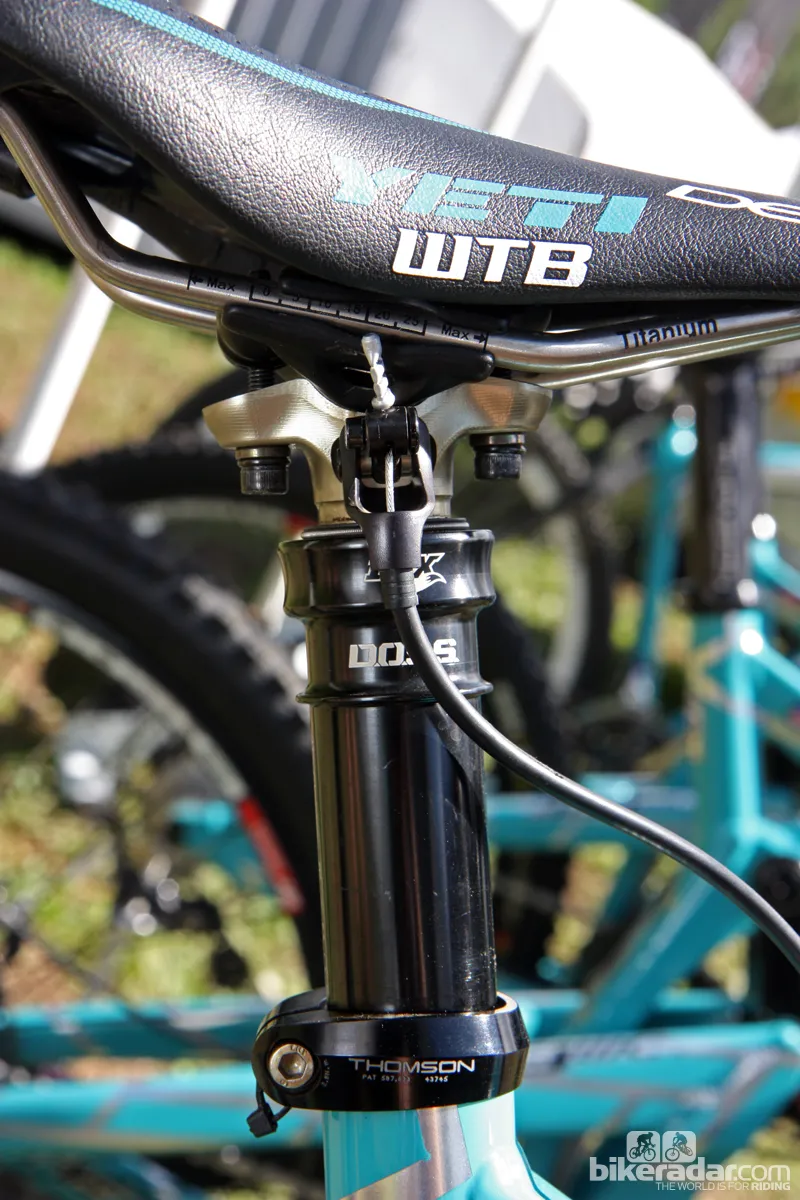
The Fox DOSS dropper seatpost head is fully symmetrical front-to-back, meaning it can be flipped around if you want the cable to attach on the other side
And a closer look at that Fox electronic-damper-equipped fork
We haven't been able to get any more information out of the folks at Fox on the battery-enhanced fork being used by Geoff Kabush (Scott-3Rox) and Catharine Pendrel (Luna) but conversations with staff on site in Pietermaritzburg suggested our recent speculative article isn't far off the mark. It sounds like the system we proposed may be a little further out than we'd hoped, though.
We did sneak in a much closer look at Pendrel's machine, however, and gleaned some additional details. The remote looks to be some sort of thumb-operated rotary setup with multiple modes – what exactly each mode corresponds to, though, we can't say – and there's not one but two wires connected to the top of the damper.

There are actually two wires fed into the top of Fox's new development fork
Also, the wire connections confirm to us that this is a joint project between Fox and Shimano. Roadies will quickly recognize from the images that these plugs are currently used on Shimano's Dura-Ace Di2 group. And the sleuthing continues...
